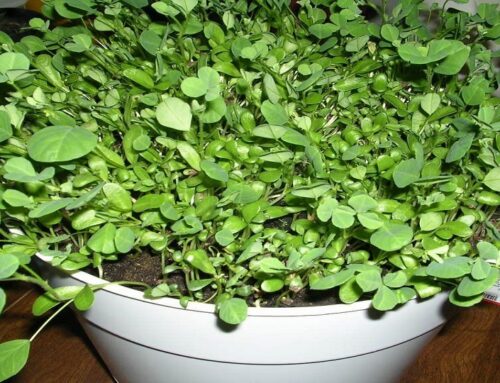Turnip plants are grown for its leaves and roots. Turnip roots are used as a root vegetable while turnip greens are used as a leafy vegetable. Turnip greens are one of the most important nutrient-dense foods available today. Turnip plants are a crop of temperate climates. It is believed to be originated in the Mediterranean region
Plant Description: Turnip is a herbaceous, biennial plant with a rosette of succulent, fleshy leaves above the ground and a prominent tap root below the soil surface. Tap root stores food and transforms into the root vegetable called ‘turnip roots’. During the first season of growth cycle, the plant completes its vegetative growth and during the next season it begins its reproductive phase for seed production.
For vegetable purposes, the plant is grown as an annual crop. For leafy greens, turnip leaves are harvested while they are young and tender. Mature leaves will be bitter in taste. Roots are harvested as soon as they are ready. Harvesting is done mostly before flowering. For seed production, plants are allowed to produce flowers. Flowers are tall and bright yellow. Fruits are like pea-like pods with numerous seeds.
Varieties: Turnip varieties can be put into two groups:
- European or Temperate Turnips
- Asiatic or Tropical Turnips
Root tubers of temperate European varieties are mild flavoured, sweet and palatable, and more suitable for using raw in salads and also as root vegetables. Root tubers of tropical Asian types are strongly flavored, pungent and are more suitable for pickling purposes. The tropical types have either red or white-coloured roots.
Popular Varieties of Turnip: Purple Top White Globe, Golden Ball, Early Milan Red Top, Pusa Swarnima, and Pusa Chandrima.
Growing Turnip: Cool, moist temperate climate is preferred by turnip plants. In warm climates, roots tend to become woody and fibrous. Well-drained, fertile, sandy loam soils are the best soils. Plenty of sunlight is needed by the plants. Propagation is by seeds. Seeds may be directly sown in the fields. Alternatively, seedlings may be raised in the well-prepared nursery beds. 4-5 week old seedlings may be, then, transplanted. Crop will be ready for harvest in 4-6 months after transplanting.
The tropical types can be sown from the end of July to September and the temperate types from September to December. In the hills, seeds are sown from March to May. Seed rate per hectare is about 2 to 3 kg/hectare.
For meeting the fertilizer needs of the plants, 20 to 25 tons of FYM (farmyard manure) or compost may be given per hectare area; this is incorporated into the top soil to increase soil fertility. After that, as a standard, 70kg Nitrogen+50kg Phosphrous+50 kg Potassium per hectare is given for the plants. 35 kg nitrogen, 50 kg phosphorous and 50kg potassium is applied at the time of planting. Rest 35 kg of nitrogen is top-dressed at the root initiation stage.
Irrigation is also necessary. Need-based irrigation is done. First irrigation is done soon after planting. Subsequent irrigations are done after every application of fertilisers and manures. During initial growth stages of the plant, frequent irrigations are necessary.
Turnip plants are susceptible to a number of pests and diseases. Most serious pests are aphids, root maggots and beetles; most serious diseases are club root and black rot. Integrated pest management (IPM) and integrated disease management (IDM) practices, comprising of cultural, mechanical, biological, and chemical control measures, may be adopted for effective management of pests and diseases.
Root tubers will be ready to be dug out 60-90 days after planting. Growing season depends on the cultivar and prevalent environmental conditions. The yield varies from 30-40 tons/ha.
Like other brassicas, growing season of turnip plants need to be extended for seed production. During first season of growing, vegetative growths of the plants are completed and tubers are formed. To produce seeds, fully grown turnip plants are pulled out and transplanted/stored in protected environment until winter is over; care is taken not to damage the roots and leaves. During the spring, plants are again planted in the soil to complete their reproductive lifecycle. Average yield of seed per hectare will vary from variety to variety and may be about 500-550 kg.
Food Uses and Nutrition of Turnips: Both turnip greens and turnip roots are powerhouse of nutrients. Turnip greens can be used as a leafy vegetable. Turnip roots may be used as a root vegetable or consumed raw as a fresh salad. Turnips roots/tubers can be sliced and deep fried and baked like French fries. Tubers may be roasted and sautéed with spices and herbs. Tubers may be boiled and steamed. Boiled tubers may be mashed with fresh cream or butter to make a delicious side dish. There are several ways to cook these vegetables.
We have a book on ‘Roots as Vegetables‘….
Check out our publishing services here…
We publish top quality videos on various ‘Food & Agriculture’ topics. You may subscribe our video channel here…






